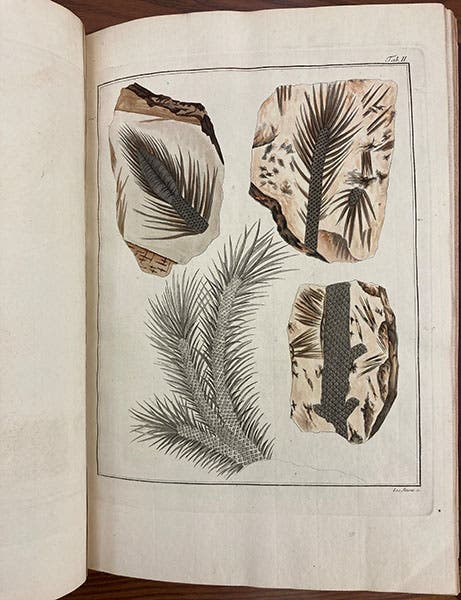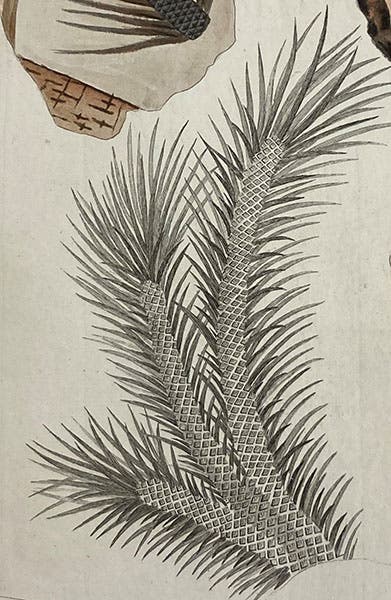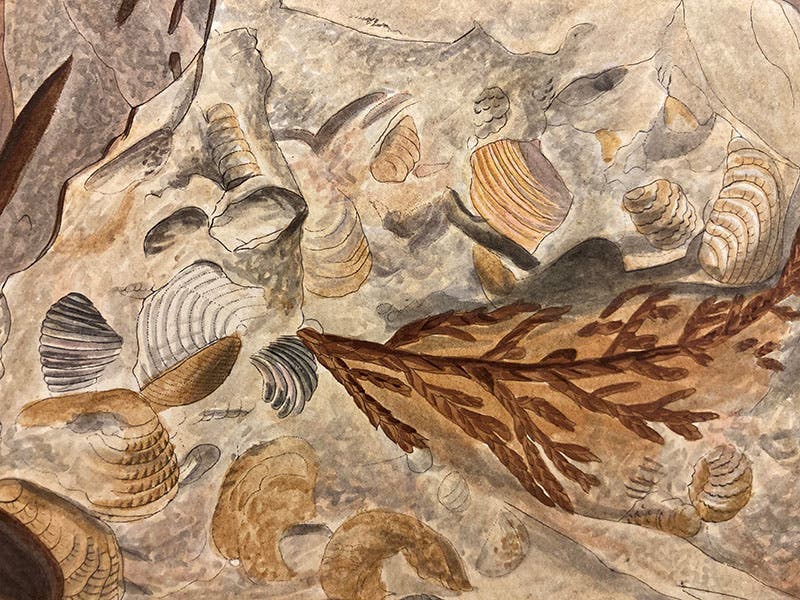Scientist of the Day - Kaspar Maria von Sternberg
Kaspar Maria von Sternberg, a Bohemian botanist, was born Jan. 6, 1761, in Prague. Sternberg was one of the founders of what is known as paleobotany (or, to the British, palaeobotany), the study of fossil plants. In 1820, when Sternberg published the first part of his Versuch der Flora der Vorwelt (Study of the Plants of the Prehistoric World, 1820-38), fossils were just beginning to be understood as the most important key to deciphering the earth's geological history, but the fossils used by such geohistorians as William Smith and Georges Cuvier were almost exclusively animal fossils, mollusks for Smith, and vertebrates for Cuvier. Sternberg was one of the first to point out that plant life had also changed over the eons, and in his book, he showed how to distinguish Paleozoic plants from those of the Mesozoic or Cenozoic.
While it is easy to be awed by a fossil Megatherium, or even an ammonite, it would ordinarily be difficult to get too excited over fossil plants, like a Walchia (extinct cypress) or an Annularia (coal-forming plant), genera that were first identified and named by Sternberg. However, if you were to leaf through his book, which we have in the History of Science Collection, you might change your mind, since the Versuch is a large folio with 127 plates of fossil plants, each one gorgeously hand-colored. Walchia never looked so good. If I had been familiar with this work when we prepared the Grandeur of Life exhibition honoring Charles Darwin in 2009, we might well have included the Versuch, it is that spectacular.
Since I am far from knowledgeable about fossil plants, for this post I have simply selected four of the most attractive plates, and for three of them I have added details, so that you can appreciate the excellence of the engravings and the beauty of the hand-coloring.
Sternberg also founded the Bohemian National Museum in Prague, and his collections of fossils and other specimens became the foundation of that collection. His home, Brezina castle, in Radnice, about 45 miles SW of Prague, sat in the middle of an important coal-mining district, the mines of which provided many of his plant fossils. He died there, in 1838, at age 77.
There is a portrait of Sternberg in the National Museum, but I cannot find in on the web; Wikipedia shows a copy, but it is a poor one. So instead, we give you a postage stamp honoring Sternberg, with his portrait, issued by the Czech Republic in 2011.
Dr. William B. Ashworth, Jr., Consultant for the History of Science, Linda Hall Library and Associate Professor emeritus, Department of History, University of Missouri-Kansas City. Comments or corrections are welcome; please direct to ashworthw@umkc.edu.













